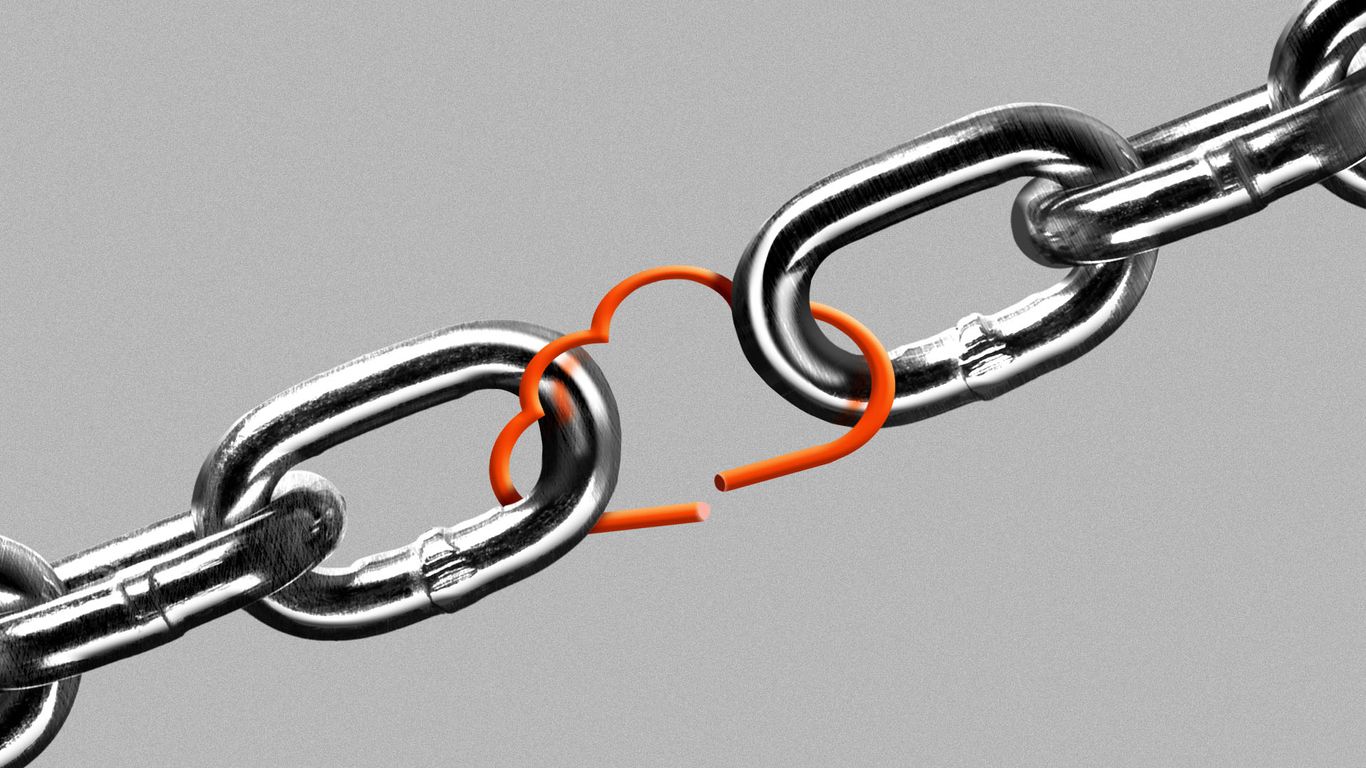
Amazon Web Services, the biggest cloud computing provider, went down Monday morning — crippling thousands of services from some of the biggest companies on earth.
Why it matters: For all its complexity and size, the global economy is fragile — breaking just one weak link drives big disruptions, online and in the real world.
Where it stands: Amazon’s East Coast region, responsible for a lot of the internet, was the culprit.
- Zoom, Venmo, WhatsApp and many gaming, banking, social media and consumer sites saw large spikes in reported outages, according to tracker Downdetector.
- The site said more than 11 million people worldwide reported issues with more than 2,500 companies as of 12:45 pm EST— and this was the biggest AWS outage of the year.
- Amazon said it addressed the problem, but as of early afternoon on the East Coast, many websites were still experiencing disruptions.
Zoom out: Just three massive cloud providers — Amazon, Microsoft and Google — serve as the technical backbone of the internet. Millions of people, and thousands of companies rely on each one.
- This is a recent phenomenon — businesses used to have their own data centers.
- But outsourcing that infrastructure to big cloud companies is cheaper and more efficient.
Between the lines: Computer systems have always had glitches or failed, what’s different now is the “centralization risk,” says Corey Quinn, chief cloud economist at Duckbill, an AWS consulting firm.
- Instead of one company’s website going down, they all crash at once. As a society, we’re still learning how to deal with that, he says.
- Even if a firm tried to stop outsourcing this work, they’d still come up against reality — the many software services that companies buy would still be using AWS or another cloud provider.
The big picture: It takes a crisis to make invisible pieces of critical infrastructure visible — both online and in the physical world.
- During COVID, we all got a lesson in the importance of the supply chain, learning that silicon chips power much our stuff, and basically just one island (Taiwan) makes them.
- The crisis also uncovered the overall fragility of the just-in-time economy, where businesses keep just an enough inventory on hand, so that any delay causes massive disruptions.
“We effectively try and squeeze all the fat out of various interactions, at some point you start getting to bone,” Quinn says.
Yes, but: These outages happen to Amazon infrequently, says Mike Chapple, who teaches cybersecurity at the University of Notre Dame.
- There was also a major disruption in 2021 that affected everything from Disney parks and Adele ticket sales, Bloomberg reported at the time.
- Most companies design their services with fail-safes that can handle breakdowns. That’s more expensive for smaller firms; they are more susceptible.
What’s next: Amazon is investigating the cause of Monday’s outage, Axios’ Avery Lotz reports. Cybersecurity and cloud experts said the company typically does a deep dive and learns from its mistakes.
- “Hopefully you never have the same kind of failure happen twice,” Chapple says.
Editorial Disclaimer:The news articles published on this website are not owned or created by us directly. We aggregate and publish news content using publicly available news feeds, and each article includes a source credit or link to the original publisher at the bottom of the post.
If any website or content owner finds that their material has been included here and does not wish for their content to appear on our platform, please contact us at [email protected] . Upon receiving your request, we will promptly remove your site from our content feed and database.
We value and respect the rights of all content creators and strive to ensure proper attribution for every piece of content shared.
